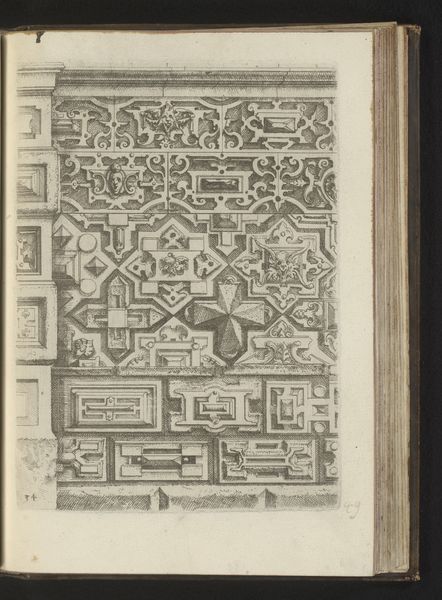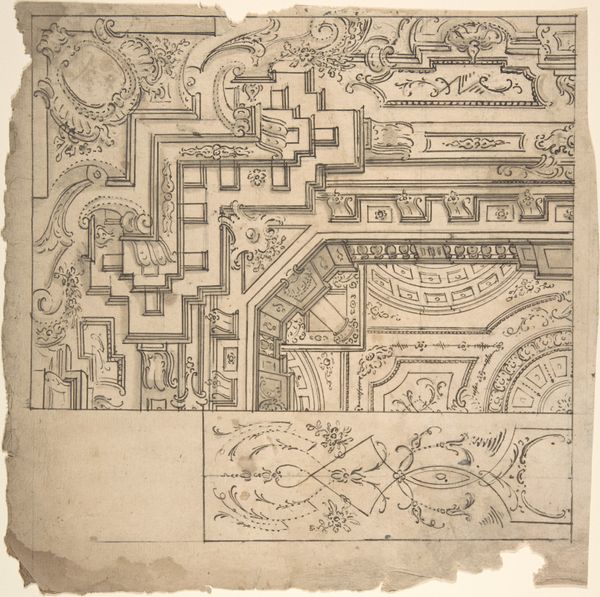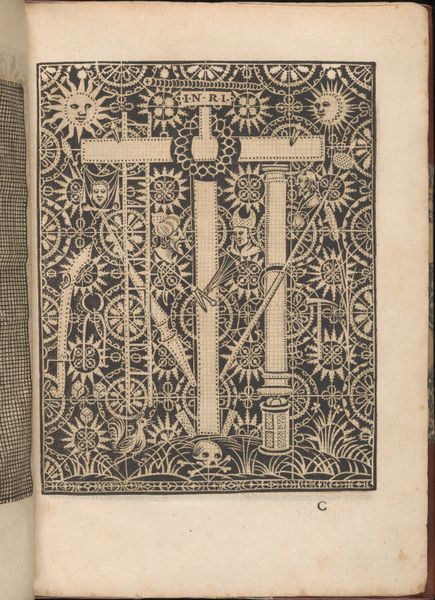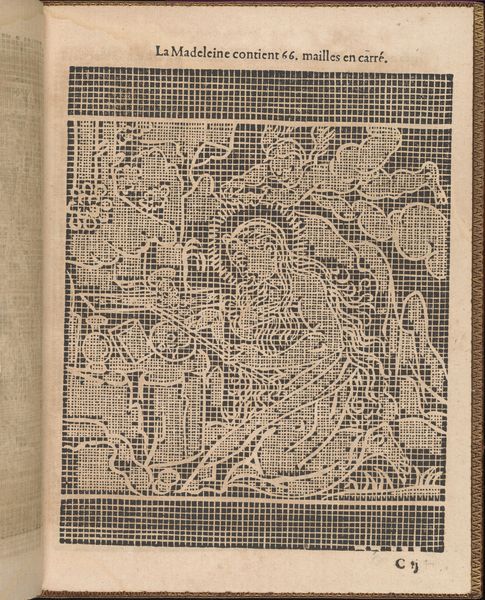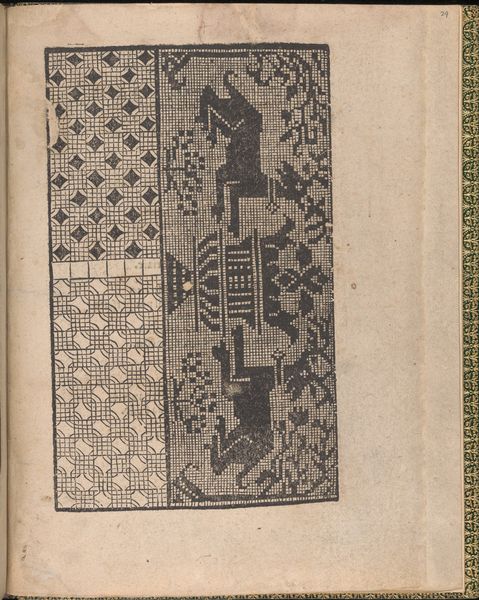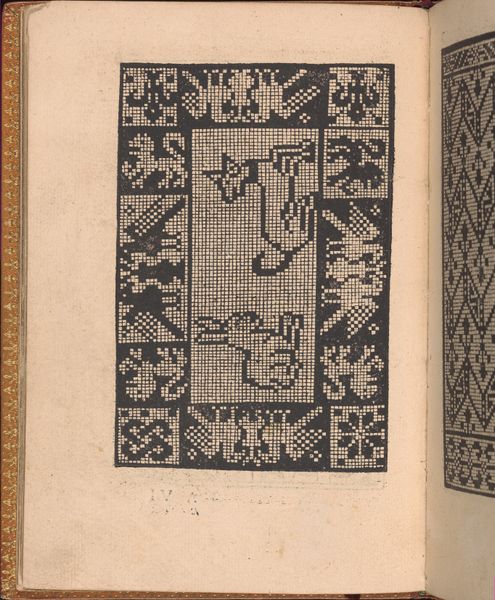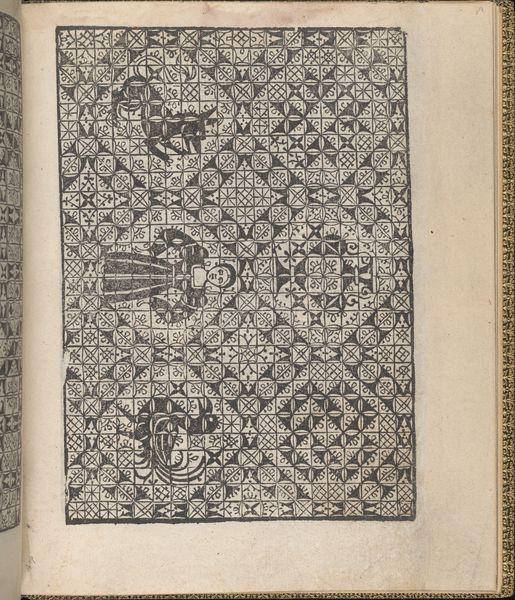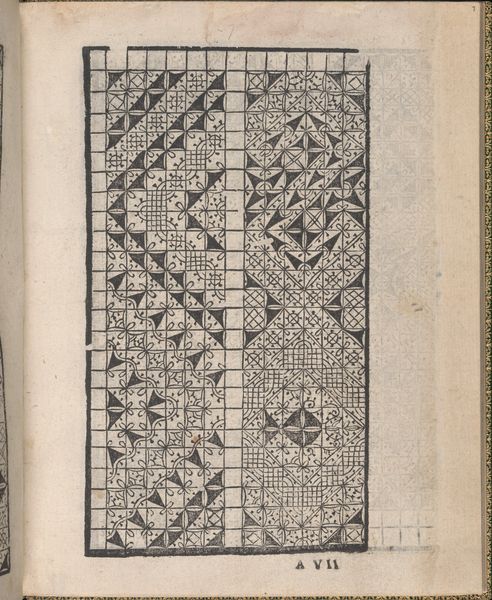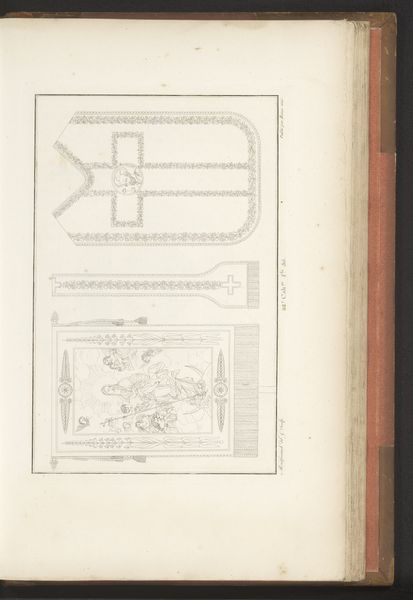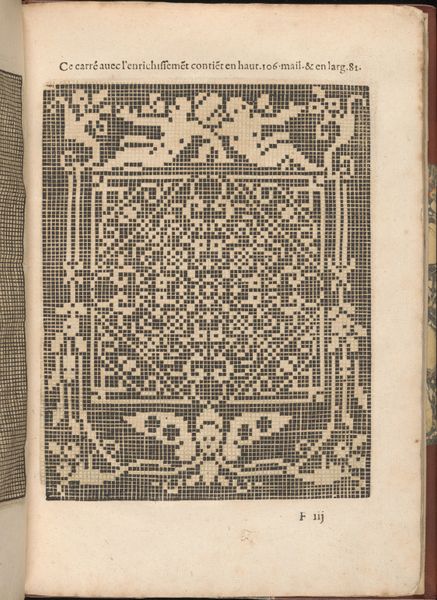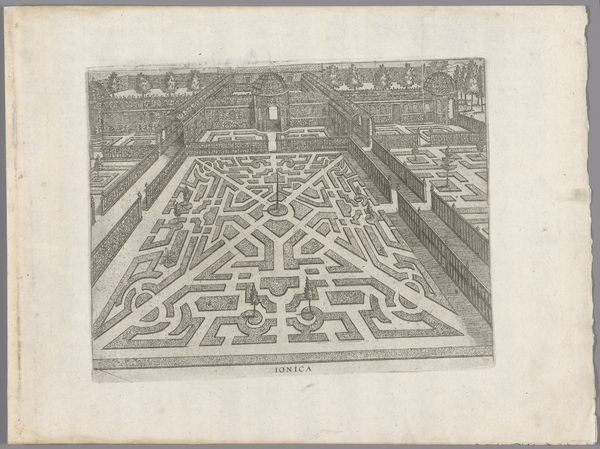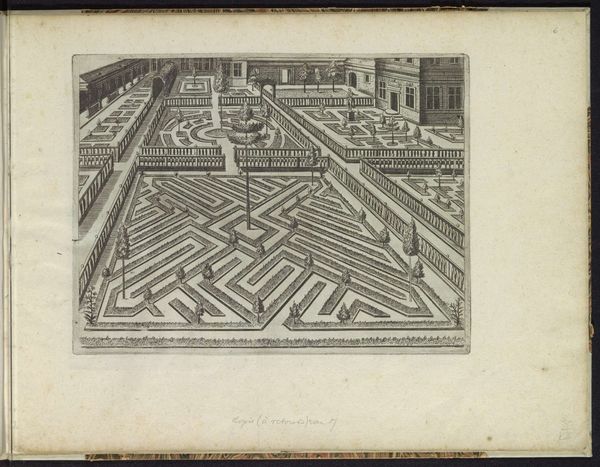
Les Secondes Oeuvres, et Subtiles Inventions De Lingerie du Seigneur Federic de Vinciolo Venitien, page 11 (recto) 1603
0:00
0:00
drawing, print, paper, ink, engraving
#
drawing
# print
#
paper
#
11_renaissance
#
ink
#
cross
#
geometric
#
engraving
Dimensions: Overall: 9 7/16 x 6 1/2 in. (24 x 16.5 cm)
Copyright: Public Domain
Editor: Here we have a page from *Les Secondes Oeuvres, et Subtiles Inventions De Lingerie* by Federico de Vinciolo, from 1603. It's an engraving on paper, depicting a very geometric cross-stitch pattern. It looks so intricate! What do you see in this piece, beyond just a historical needlepoint design? Curator: This isn't merely a needlepoint design; it's a coded language reflecting social and religious identities in the early 17th century. Notice the meticulous grid; it speaks to the structured lives, particularly of women, who were often confined to domestic spheres but found subversive expression in these crafts. What does the "Passion" in the title tell you about the imagery? Editor: I see the ladder, and vaguely, some figures resembling people and a cross… Is this Passion referring to the Passion of Christ? Curator: Precisely. But think about how this symbol, central to Christianity and often deployed as a tool of power, is re-imagined here, softened through domestic craft. The very act of creation, predominantly a female activity, challenges patriarchal structures by embedding complex narratives within everyday objects. Who held the power of creation in this environment? Editor: That’s fascinating; the piece becomes about reclaiming and retelling a powerful narrative through a traditionally "feminine" art form, almost a quiet act of rebellion, turning domesticity into a space for personal and perhaps even political commentary. Curator: Exactly! And this interplay—between societal expectations, religious symbolism, and individual expression—is what makes this seemingly simple embroidery pattern so resonant even today. Recognizing that resistance can be woven, literally, into the fabric of our lives helps us understand the nuances of lived experiences in history. What lasting impression does this leave on you? Editor: I will never look at embroidery the same way again. It’s a reminder that even the most conventional crafts can be powerful tools for cultural commentary and perhaps even social change.
Comments
No comments
Be the first to comment and join the conversation on the ultimate creative platform.
